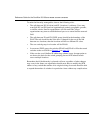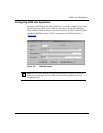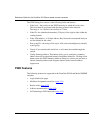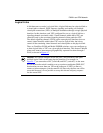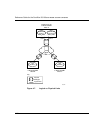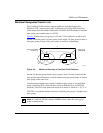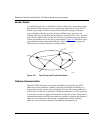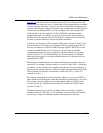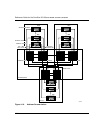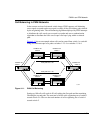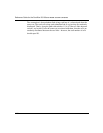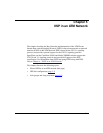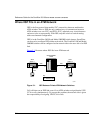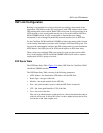
PNNI in an ATM Network
893-01006-C
4-23
Figure 4-10 shows how address summarization works. The switch prefixes and
link numbers are shown for area A. Assume that default summarization is enabled
in all the switches. Switches A1 and A2 can learn reachability information from
switches A01 through A120 by using either static configuration or PNNI. If these
switches are not running PNNI, users can configure link 1 A01 through link 1
A120 and link 2 A01 through link 2 A120 as IISP links and then statically
configure the routes. In switches A1 and A2, specific routes for the addresses
39.00.01.0A.00.01 through 39.00.01.0A.00.20 are configured. These addresses
are seen as external addresses (exterior reachable addresses).
If switches A01 through A120 are running PNNI, then switches A1 and A2 will
learn the addresses of switches A01 through A120 by exchanging node IDs. In
this case, the addresses 39.00.01.0A.00.01 through 39.00.01.0A.00.20 are seen
as interior reachable addresses. If switches A1 and A2 have only default
summarization turned on, they must advertise all these addresses to the other
switches (B1, B2, C1, C2) in the PNNI group. Thus the number of reachable
addresses in the network is very high whether switches A01 through A120 are
running PNNI or IISP.
PNNI address summarization can cut down the number of reachable addresses
advertised. If a summary address (interior or exterior) 39.00.01.0A is configured
in switches A1 and A2, then these switches will advertise only this address as it
summarizes the specific addresses 39.00.01.0A.00.01 through 39.00.01.0A.00.20.
Thus the number of addresses advertised to switches B1, B2, C1, and C2 is
reduced from 20 to 1.
By properly configuring the internal summary addresses, you can run PNNI on
edge switches also but keep the advertised reachability information to a low level.
For example, you can configure an internal summary address 39.00.01.0A in
switches A1 and A2, 39.00.01.0B in switches B1 and B2, and 39.00.01.0C in
switches C1 and C2.
Configured summaries provide the capability either to advertise or suppress
matching addresses. Therefore, a user wanting to screen an address for security
reasons may configure a matching summary with suppression enabled.




